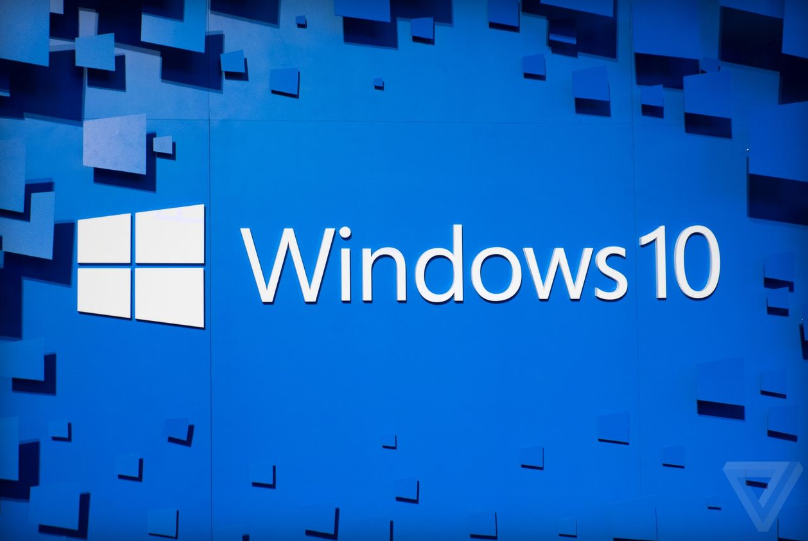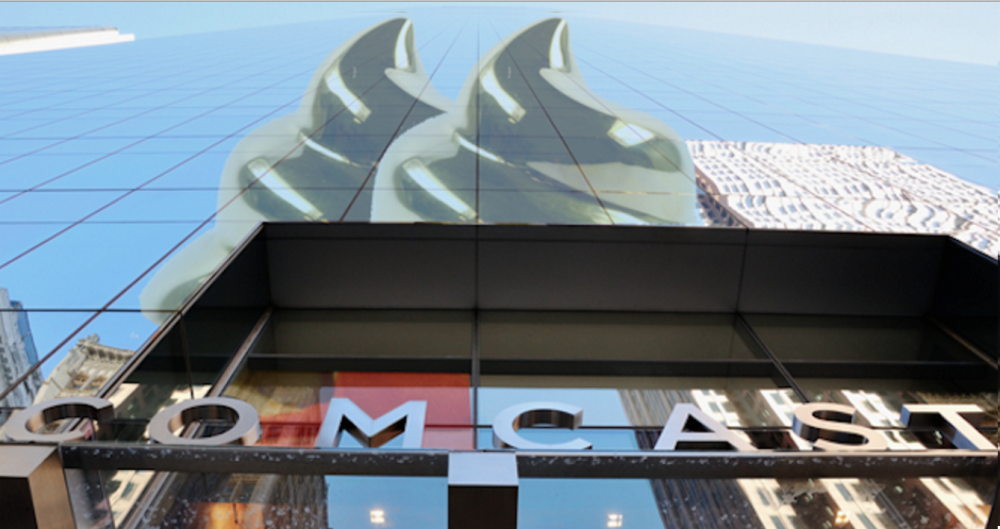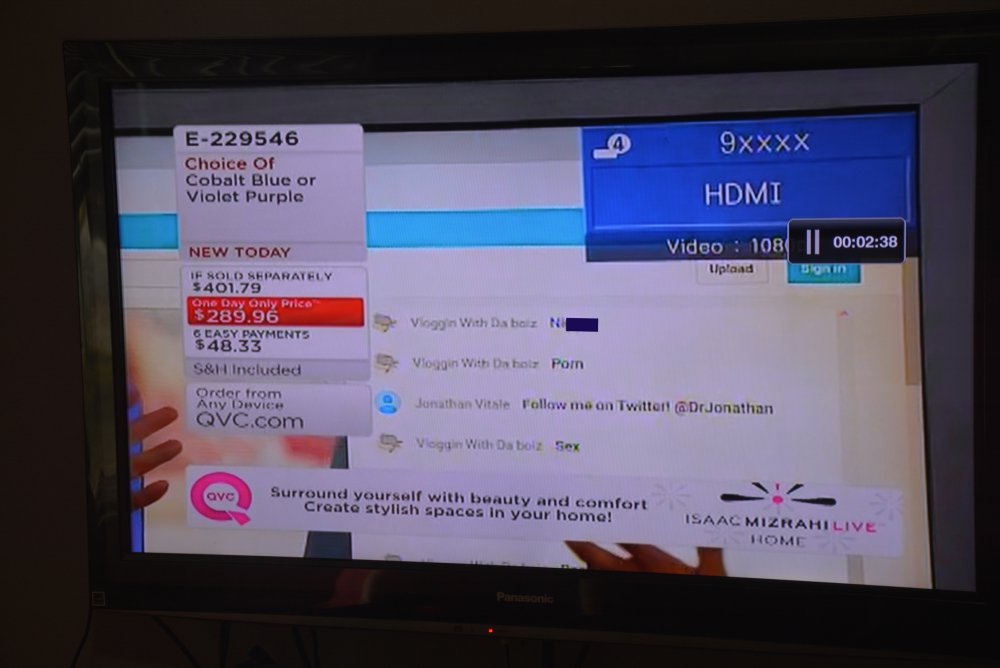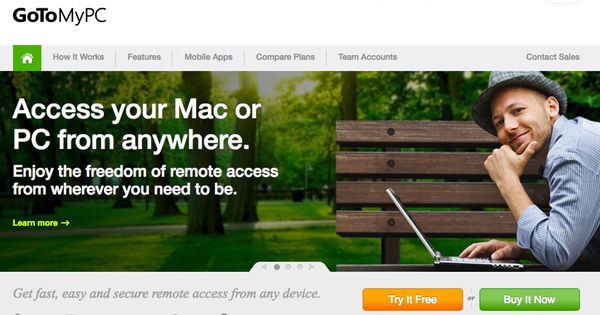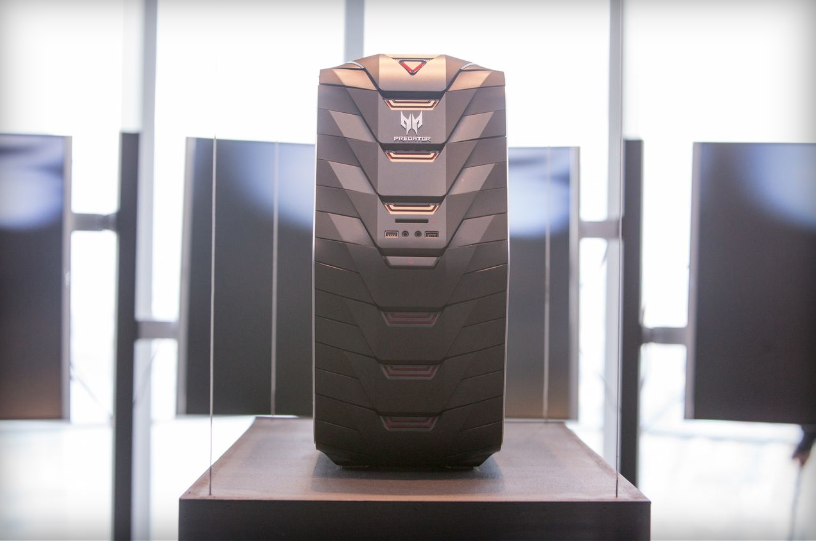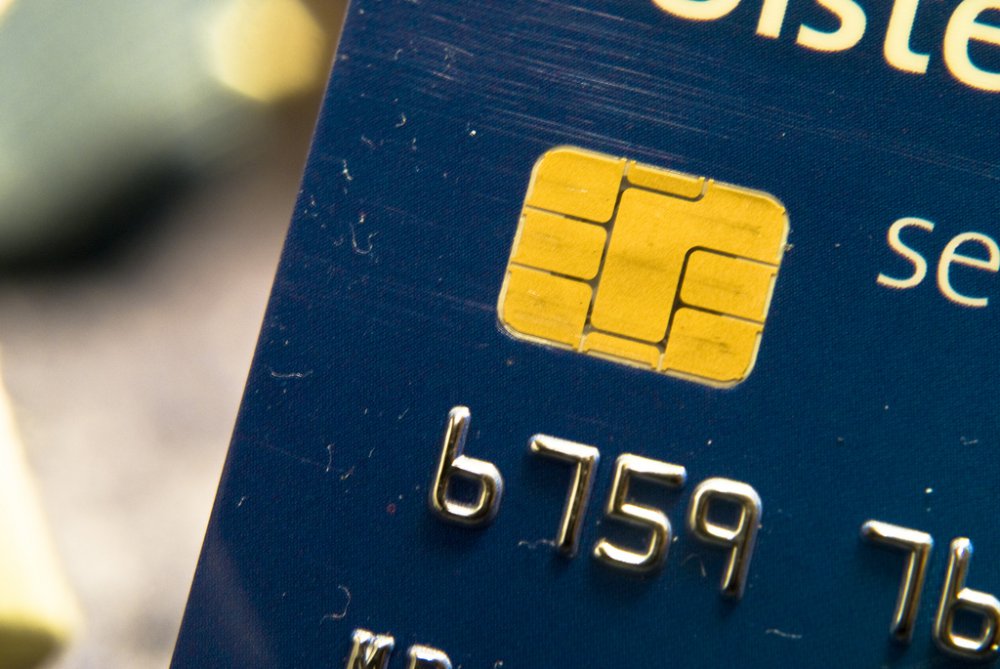-
Posts
7,282 -
Joined
-
Last visited
-
Days Won
2,416
Content Type
Forums
Blogs
Events
Resources
Downloads
Gallery
Store
Everything posted by allheart55 Cindy E
-
Microsoft started aggressively pushing its Windows 10 upgrade notifications back in February. While more than 300 million machines are now running the OS, some people haven't been particularly happy with how they received the upgrade. Microsoft is paying out $10,000 to a woman in Seattle who claims that Windows 10 installed itself on her work computer without her permission. Microsoft's initial upgrade prompts for Windows 10 were relatively clear, but in recent months the company tweaked its prompt so that if you simply dismissed it using the "Red X" the upgrade would schedule itself anyway. "Since we introduced a new upgrade experience for Windows 10, we've received feedback that some of our valued customers found it confusing," admits Windows chief Terry Myerson, in a statement to The Verge. "We've been working hard to incorporate their feedback and this week, we'll roll out a new upgrade experience with clear options to upgrade now, schedule a time, or decline the free offer." Microsoft has clearly learned that its ambition to have one billion machines running Windows 10 isn't worth losing the trust of its customers over. The new prompt includes the ability to "decline free offer," and the "Red X" at the top corner of the dialogue box will no longer initiate the upgrade. Windows 7 and Windows 8.1 users have around a month left until Microsoft's free Windows 10 upgrade offer comes to an end. Microsoft is expected to charge $119 for an upgrade to Windows 10 from July 30th. Source: the verge
-
- 300 million
- installed
-
(and 3 more)
Tagged with:
-
Awesome, Dougie. I knew that you'd figure it out, one way or another.:thumbsup:
-
For months, we’ve cataloged continued user resistance to Microsoft’s Windows 10 upgrade policies, the company’s increasing attempts to shove users to adopt the OS, and its occasional backtrack when its own policies went too far. It seems that at least one customer took the fight to court and won a small judgment against the company for how it deployed its latest operating system. The Seattle Times reports that Teri Goldstein, of Sausalito, California, sued Microsoft after a failed Windows 10 upgrade left her system performing poorly, prone to crashing, and reportedly unusable for multiple days. Given the general issues associated with performing in-place upgrades, even successful ones, it’s not surprising that some users would run into problems. Goldstein reached out to Microsoft customer service to attempt to resolve her issues, but filed suit against the company once it failed to resolve her problems. Her $10,000 figure reflected estimated lost compensation as well as the cost of a new system. Microsoft had appealed the initial judgment but dropped that appeal last month. A spokesperson for the company told the Seattle Times that it denied any wrongdoing and had dropped the appeal to avoid the additional expense of further litigation. One $10,000 judgment against Microsoft isn’t going to make a blip in the company’s financial earnings or its overall Windows 10 trajectory. But it neatly caps a year of self-inflicted damage regarding Windows 10 and Microsoft’s free upgrade. The repeated changes to Windows 10’s upgrade policy, mandatory telemetry collection, and decisions to kill off patch notes and make all updates mandatory (plus the issues with UWP and gaming) have collectively left a bad taste in many users’ mouths. None of these are fundamental reasons to stop using Windows 10, but they speak to the company’s profound trouble communicating what ought to be a winning strategy. The Windows 10 giveaway was a great concept, and the entire process could’ve been handled in a way that made people want to switch. Instead, Microsoft has been dragging people into upgrading in much the same way you might grab a cat and drag it off for a bath. With just over a month to go until it officially stops offering free upgrades to Windows 10, Microsoft has yet to budge from its stance that once the one-year mark is done, the company will no longer offer a free upgrade to consumers. Currently, Windows 10 Home is $119, while Windows 10 Pro is $199. Prices are identical between the downloadable and USB versions of the operating system. Microsoft hasn’t specified how it will price upgrades after the free offer has expired. In the past, upgrade-only versions of the OS typically sold for $50-$70 less than full versions, though this has varied depending on the OS in question. As for whether Microsoft’s recent actions have damaged the company’s long-term relationship with customers, it’s too soon to tell. At least some users claim to have sworn off Microsoft products or to have disabled Windows Update altogether to avoid the Windows 10 upgrade, but such remarks probably don’t reflect average user behavior (and we can’t recommend turning off all OS updates to avoid Windows 10 in any case). The bigger issue for Microsoft isn’t necessarily the loss of Windows users, but its failure to establish trust and a cooperative relationship at a time when the company is still trying to make major changes to its software distribution model. Microsoft needs enthusiastic buy-in for its various plans from both developers and customers — not a grudging acceptance of the new status quo. Source: extreme tech
-
- judgment
- upgrade policies
-
(and 1 more)
Tagged with:
-
-
-
There was another video, it's on the Source Link, I was unable to post it. The video clip is of BigDog, a clumsy looking robotic oaf.
- 3 replies
-
- boston dynamics
- engineering
-
(and 1 more)
Tagged with:
-
I'm always amazed by Boston Dynamics. One anecdote I like to share about the company is how the next generation Atlas has 3D printed limbs, with embedded "veins" in the structure to route its hydraulics, which keeps the robot strong while making it vastly lighter and in some sense simpler than the original Atlas. That's just some impressive engineering work on all levels. Of course, while Boston Dynamics is pretty much at the state of the art when it comes to humanoids, it's probably best known for its terrifying line of dog-inspired, gas-powered robots like BigDog and AlphaDog. It's also famous for kicking those robotic animals, in an amazing technical display of realtime balance on the part of the robot, and an amazing level of this-can't-look-like-anything-other-than-animal-cruelty on the part of the robot's handlers. Right now the company is owned by Alphabet, but, according to Bloomberg, Alphabet is looking to sell Boston Dynamics because it doesn't have any products that can actually be released in the near term. Yesterday we got to see Boston Dynamics' latest robot, SpotMini, and if it weren't for the telltale kitten mittens-style gait, you'd think it was from another company. Instead of the battlefield, or the sort of emergency situations the DARPA Robotics Challenge was targeting, SpotMini is clearly designed for the home: it's electric, lightweight, and almost cute. But there are a bunch of reasons we don't have useful robots in our homes yet. We have Alexa. We have Alexa-like things on wheels. We even have tele-operated video conferencing screens on wheels. But robots that can actually do things in the physical world other than vacuum are scarce. Here are some of the problems a home poses, most of which SpotMini is engaging with: 1. Homes have doors and stairs and carpets and all sorts of obstacles. Opening a door is really difficult for robots. Like, just dang hard. You need precise articulation, good balance, and good movement. It's much easier to solve with a stable robot on a wheeled platform, but then that robot becomes useless in almost any home that has steps, differing levels, or even thick carpet — which is most of them. SpotMini can climb steps and negotiate uneven terrain, so that's basically solved. And while Boston Dynamics doesn't demonstrate any door opening in its video, the arm attached to the top seems strong enough and well enough articulated to manage the feat. 2. Homes have children in them. Weight isn't just important for robots getting better battery life, or not breaking when they fall over. It's important because of what they might fall on. Like a child, for instance. SpotMini is 65 pounds with an arm — about the weight of a golden retriever. But it’s not exactly soft. That would hurt if it fell on you. Or, and I hate to keep bringing this up, a child. Boston Dynamics will probably have to figure out a way to make an even lighter robot, or to make it so aware of its surroundings that it will have zero chance of harming a human. Both are tall tasks. 3. Homes are full of fragile objects that we want robots to bring to us. I think the first robot that can reliably get something from the kitchen and bring it to you will be an amazing seller, and basically singlehandedly usher in the era of home robotics. SpotMini is obviously close to achieving this all-important feat. The YouTube video ends with SpotMini's abortive attempt to deliver a Diet Coke. It's an impressive outtake, and props to Boston Dynamics for including it — direct human-robot interaction is super hard, and often kind of dangerous. Things don't end well for the Diet Coke, however, or SpotMini. But think of how difficult this exchange is. SpotMini has to identify the correct human (not, for instance, the camera man), find a free hand on the human, then put a Diet Coke in this hand and release the Diet Coke at the precise moment it can know the human has a good grip. This is beyond just a mechanical task, it's a how-do-humans-think task. It's something even I'm not very good at, if I'm being honest. Even just holding something securely without crushing it is still at the . Do you notice in the video how when SpotMini is doing the dishes (kudos BTW, that's amazing), it crinkles the pop can when it picks it up? Most humans know how to not crush things accidentally when they grab them. But there's a lot of subtle intelligence and mechanics behind that process. 4. Homes don't have military budgets. This, sadly, makes all these other problems much harder. You can't put the best sensors, best actuators, best components, and best intelligence into a home robot. Most of Boston Dynamics' robots cost much more than a luxury car — many of them were developed with multi-million dollar government funds. I have no idea what SpotMini would cost if it was produced at a mass scale, but probably it would still be near a car-level expense. The hope is that better material science, and better machine intelligence, and better something else will be the breakthrough home robotics need. Until then, Boston Dynamics' tech demos will always be thrilling, but still far from practical. 5. Homes are where cute things live, so we can love them most effectively. SpotMini is creepy. Not as creepy as, say, BigDog. But still kind of creepy, especially in the way it walks. Can it ever learn how to chill out and be adorable? Let’s hope. Source: theverge
- 3 replies
-
- boston dynamics
- engineering
-
(and 1 more)
Tagged with:
-
-
LinkedIn is obviously a very handy tool when it comes to the world of work, but far too many users of the social network are happy to connect with strangers, who could be malicious parties looking to cherry-pick precious data. That's the headline from a new survey of 2,000 people in the UK, carried out by Intel Security, which found almost a quarter of respondents (24%) had connected with someone they didn't know on LinkedIn. There's a chance that said unknown person could be a criminal type who simply wants to rifle through their potential victim's profile, in order to find personal details which could make a crafted spear phishing attack look far more realistic (and far more likely to be swallowed). Raj Samani, CTO EMEA Intel Security, observed: "When a person in a similar industry to us, or a recruiter, requests to connect on LinkedIn, it may look harmless, but hackers prey on this as a means to target senior level professionals and ultimately the corporate network." Samani further noted that attackers may start by targeting junior or middle management staff, subsequently using connections with these colleagues as a way to concoct a more successful campaign against senior execs. Ultimately all this could lead up to a CEO fraud attack where the cybercriminal goes after the chief executive for a major payload. Samani observes that this is "a type of attack which is continuing to affect more victims and lead to even greater financial losses according to assessments by the FBI." Lack of thought Most of those surveyed admitted that they hadn't even wondered about whether somebody on LinkedIn might not be who they say they are – 69% of respondents in fact. Also, 87% of those questioned said their employer had never made them aware of any social media policy pertaining to LinkedIn. Although there's a good chance many organizations don't have such a policy – as we saw in another piece of research yesterday, only half of all businesses have a policy in place. The answer to helping combat these dangers? Naturally, it's training staff to be aware of LinkedIn imposters, and the way phishing scams are put together in general. As ever, you should never take anything at face value, particularly links and attachments, and remember that emails may not be from who they appear to be sent by (email spoofing being another growing danger). Also check out the reasons why LinkedIn was recently bought by Microsoft Source: tech radar
-
Nearly two years after Consumerist reader Robert shut down his business-tier service with Comcast, he’s still fighting with the nation’s largest broadband provider over a $1,775 early termination fee that should not have been assessed. Comcast even admits the money shouldn’t have been debited from Robert’s bank account, but now says it’s his responsibility to sort the mess out with his bank. Robert tells Consumerist he first signed on with Comcast for his small business in early 2011, agreeing to a two-year contract, which came and went in 2013 without any ceremony. In an effort to save money in 2014, Robert called to have their service level downgraded to a more affordable rate. Shortly thereafter, correctly believing that he was out of contract, he cancelled his Comcast service. That should have been the end of the story, but only weeks after closing the Comcast account, the boys from Kabletown decided that Robert was not out of contract, debiting $1,775.44 from the checking account tied to the Comcast service. “After several calls I was told a blank contract was created without my signature,” Robert explained in an email to Consumerist, but even then Comcast was admitting it was an error and that Robert should receive a refund check. Skip forward to Jan. 2015 — two months after being told he’d get made whole; still no check. Robert says that when he called Comcast, “the rep actually laughed when I told her I didn’t get a check yet. She said it would take three months.” The check still didn’t come, and repeated attempts to get an answer or an actual refund from Comcast went nowhere. When he called again in June 2015, Robert says the response was “Ohh sorry, we messed up but the check is getting sent out now.” He says Comcast repeated that sentiment again in Aug. 2015, then again in Jan. 2016: “We made a mistake and this time the check is really getting sent out.” More recently, he received an email from someone at Comcast “Executive Customer Relations,” claiming to have reviewed his account. “t does appear the Early Termination Fee (ETF) applied to your Comcast Business account was done in error,” reads the email, confirming what Robert had already been told, but at least this was in writing, so Comcast has to do something, right? Nope. “I understand you’re claiming that someone advised you Comcast would send a refund check for the last payment that was debited but this is generally not the way we handle these situations,” continues the condescending email. “We generally only issue a refund check for a disconnected account with a credit balance leftover. For your situation, you would have to dispute the payment with your bank.” So… Comcast took almost $1,800 from his account — and has had it in its coffers for nearly two years — and instead of sending him a check for the full amount, plus interest and a spiral-cut ham with a gift card to Universal Studios, he is now supposed to try to explain this all to his bank? Robert even replied to the Comcast rep, asking him how long Comcast would allow a customer to owe $1,775 without being sent to collections. A response to that question is presumably not forthcoming. This all didn’t seem right to us, so we took the issue to Comcast HQ, which didn’t comment on Robert’s story but promised to look into it. Not even two hours later, that same Comcast rep wrote with good news. “More information just came in,” reads the email, which explains that an ETF credit was indeed applied to his account in Dec. 2014, but “through some error the refund check never generated.” According to the email, Comcast is sending a check — totez 4 realz this time, swearzies! — and that Robert will have it within 7-10 business days. Robert’s response was understandably muted: “Hopefully this time they are actually sending me a check.” What’s unclear is whether or not Robert would be able to file a lawsuit against Comcast. The company’s current terms of service include a forced arbitration clause that prohibit customers from suing Comcast for any reason in a court of law. However, it looks like the terms he initially agreed to did not include such a clause. We’re not lawyers and we can’t say whether someone in Robert’s situation does or doesn’t have a case, but we can say that this is exactly the kind of situation where a customer should at least be able to consider the option of pursuing their claim against a company instead of being contractually obligated to have that claim heard through the bizarre, business-friendly process of binding arbitration. Source: consumerist
-
- business-tier
- comcast
-
(and 1 more)
Tagged with:
-
Tech support scams have been around for quite some time. As a result, it's no surprise these ruses are growing in number and sophistication. A tech support scam used to only consist of unknown fraudsters messing around with fake anti-virus alerts, or cold-calling potential victims pretending to be Microsoft and offering to help with a virus infection. Not anymore. Resellers of legitimate computer security software have been getting caught up in the scamming game. Not only that, but some scams are leveraging advanced techniques like computer lock screens to trick unsuspecting users. It would now appear scammers have added yet another tactic to get what they want: impersonating a victim's Internet Service Provider (ISP). This new tech support scam begins with a pop-up message that interrupts a user's browsing session. The message appears to come from the victim's ISP, with Malwarebytes having detected several messages that claimed to originate from several popular U.S., Canadian, and UK Internet Service Providers including AT&T, ComCast, and TalkTalk. The scam informs the user that their ISP has "detected malware" on their machine and recommends they call a fake customer support number. It is at that stage that a "representative" tricks the user into giving them remote access to their computer and/or paying hundreds of dollars for fake technical support. Jérôme Segura, a senior malware intelligence analyst at Malwarebytes who has seen other tech support scammers impersonate victims' ISPs, feels this latest ruse represents the next phase in tech support scams. As he told the BBC: "It caught me by surprise and I almost thought that it was real. It was a page from my ISP telling me my computer was infected. It was only when I looked in closer detail that I saw it was a scam. Cold calls are very wasteful and after years of being told, people are starting to realise it is a scam so the scammers have to find new ways to make it personalised and legitimate. It is more cost-effective and efficient than cold-calling." But just how are scammers finding out a victim's ISP? That's the ingenious part. Using an advert with a single malicious pixel, fraudsters are infecting users who visit legitimate websites with malware. That malware, in turn, redirects the user to a website that looks up their IP address, information which they use to determine their ISP. Users should always be cautious of unexpected pop-up messages in their browsers. They should also be wary of unsolicited calls and emails offering to fix their computers. Regardless of who claims to be on the other end of those pieces of correspondence, users should never give out their account numbers. They should always contact a company directly if they are looking for technical support. Source: graham cluley
-
-
Today Microsoft released Windows 10 Build 14371 to Insiders on the the Fast Ring and, while it had a long list of fixes included, it only had one new feature added however, this feature promises to help users minimize activation issues which can be a source of frustration. We are at the point in the development of the Windows 10 Anniversary Update, just five weeks from the expected release date on 29 July 2016, that in the past there has been a slowing down of builds and new features to the operating system update. Apparently the new Microsoft is changing even more than it has because we have had a total of nine new builds released to testers in June alone. There have been five for PCs and four on the mobile side. So let's start with a little Windows 10 history. Here on SuperSite: Windows the time leading up to the initial release of Windows 10 last July was full of questions about licensing, activations, what hardware changes would trigger re-validation of the license and other concerns when it came to the actual upgrade process for Windows 7/8.1 devices to the new operating system. We learned a lot along the way about the Digital Entitlement and the critical necessity to perform an upgrade to Windows 10 first before any clean installs so that the hardware would have the right Digital Entitlement for activation. That was even more critical because at that time users were not allowed to use their Windows 7/8.1 product keys to activate Windows 10 on their devices. A Windows 10 system activated with a Digital Entitlement. Then leading up to the release of the Windows 10 November Update last year, Microsoft implemented a feature just four weeks prior to the first major update of Windows 10 that allowed users to activate their Windows 10 installs using the product keys for Windows 7/8.1 on that hardware. That meant simplicity when it came to activation whether you upgraded from the eligible operating system or you did a clean install. Now here we are just five weeks before the release of the Anniversary Update for Windows 10, the second major update for the OS, and Microsoft has just unveiled a new feature that will go even further to helping users maintain their activation and eliminate concerns about losing their free Windows 10 upgrade. A Windows 10 system showing the Digital License activation. Beginning today with Windows 10 Build 14371, users will be able to associate their Microsoft Account (MSA) to their systems Digital License (DL), what we used to call a Digital Entitlement, and validate that hardware by logging in with their MSA. If they use a Local Account then they would be prompted to sign in on the Settings > Update & security > Activation page to connect the DL to their MSA. What this basically does is give the user the ability to run the new Activation Troubleshooter when they encounter activation issues on a Genuine Windows system. Some examples of possible scenarios could include a system that was activated with Windows Professional but inadvertently has Windows Home installed in a clean install. The situation that is more likely to occur though, and probably the one that concerns people more than anything, is a hardware upgrade of say a disk drive, video card or even a motherboard according to Microsoft, causing the system to be no longer properly activated. In these situations users will be able to go to Settings > Update & security > Activation > Troubleshoot to begin the troubleshooter and resolve the activation issues. Of course, key to this is that user must have previously logged their Digital License against their MSA otherwise that activation information will not be available when the Activation Troubleshooter attempts to resolve the issue. If you already use a MSA to log into Windows 10 on your devices and your device is already properly activated then this information is already tied to your MSA. There is an entire Feedback Hub article with walkthroughs and screenshots of what you will see using the Activation Troubleshooter so be sure to check it out. Source: winsupersite
- 1 reply
-
- activation issues
- fixes
-
(and 1 more)
Tagged with:
-
Must have been. A mistake like this can certainly be a career breaker.
- 2 replies
-
- home-shopping
- laptop demo
-
(and 2 more)
Tagged with:
-
Imagine you’re sitting in your living room, watching some home-shopping show on QVC. The host is showing off some of the features on a laptop computer and — wait, did that just say “N****r”?? A Consumerist reader — we’ll call her Jane — says her sister spotted this, and other not-family-friendly language while watching a recent laptop demo on QVC. “They were selling a cheap laptop, which I thought she wanted me to see,” Jane said. “I just said ‘no’ to her, I wouldn’t get it, then she said look at the text on the screen. So I did.” And she wasn’t pleased. The screen of the laptop, which was being sold for $289, appears to showcase a social media site of some kind that displays usernames and actions, perhaps a search. Along with the aforementioned N-word, the screen displayed adult-oriented terms like “Porn” and “Sex.” “This just floored me, I had a jaw drop moment,” Jane says. “I took the picture while my sister paused the screen.” Jane hoped that the company would notice the issue and take down the offending content during a commercial break. But that didn’t happen. “What they did was they kept the content up, went on selling their laptop,” she said. The women emailed QVC with the photo, but according to Jane they only received an automatic response. She also posted it on social media, but it, so far, hasn’t garnered a reply. After Consumerist reached out to QVC, the company issued an apology and claims to be looking into the matter. “QVC is investigating an incident in which inappropriate social media comments generated from an outside source were momentarily and accidentally shown on our live programming,” Doug Rose, SVP, Brand and Communications, QVC, said in a statement to Consumerist. “We apologize to any viewers that were offended by this unauthorized content. The language shown was in direct contradiction to our values at QVC, and has no place in our broadcast nor anywhere else in our community. We are evaluating our screening procedures for live streaming social media content to prevent an incident like this from happening again.” Source: consumerist
- 2 replies
-
- home-shopping
- laptop demo
-
(and 2 more)
Tagged with:
-
I wondered what was happening. Thanks, Bob.
-
Experiencing a problem logging into GoToMyPC? There's a reason for that. Your password has been reset by Citrix, the company which runs GoToMyPC.com, after hackers reportedly attacked the service. Here is part of GoToMyPC's security advisory: IMPORTANT SECURITY MESSAGE FROM THE GoToMYPC TEAM Dear Valued Customer, Unfortunately, the GoToMYPC service has been targeted by a very sophisticated password attack. To protect you, the security team recommended that we reset all customer passwords immediately. Effective immediately, you will be required to reset your GoToMYPC password before you can login again. To reset your password please use your regular GoToMYPC login link. Recommendations for a strong password: Don’t use a word from the dictionary Select strong passwords that can't easily be guessed with 8 or more characters Make it Complex – Randomly add capital letters, punctuation or symbols Substitute numbers for letters that look similar (for example, substitute “0” for “o” or “3” for “E”. It's a shame in their recommendations GoToMyPC's security team left out the most important one of all - don't reuse your passwords in multiple places. After all, it's sensible that your GoToMyPC password has been changed - but you also need to ensure that you change your passwords on any site *other* than GoToMyPC if you were making the mistake of not using unique passwords. It's also a pity that the details are a little sketchy. Has GoToMyPC suffered a data breach, with passwords nabbed from its servers by online criminals, or is it that attackers are using credentials stolen from other sites to gain access to GoToMyPC accounts? Right now, GoToMyPC isn't saying. Maybe it simply doesn't know. GoToMyPC is sensibly recommending customers enable two-step verification, which will mean any potential hackers will need more than your password alone to access your account. The news of the GoToMyPC security breach comes soon after users of TeamViewer, another service for remote desktop access, claimed that their accounts had also been attacked - although the company has denied that it has suffered a security incident. Source: graham cluley
-
Security failures at online services don't come much bigger than the issue Acer has just owned up to. In a letter to customers of its online store, the Taiwanese PC maker admits it has found "unauthorized access by a third party to [information] potentially including your name, address, card number, expiration date and three-digit security codes." That's all anyone needs to be able to make remote purchases, whether on the web or by phone, and it marks a particularly bad lapse in Acer's data safeguards. Affected customers are those who bought anything from Acer's North American web store between May 12th of last year and April 28th this year, and all will be receiving the letter advising them of the security breach. Acer has told ZDNet that the total number of exposed accounts is 34,500. Login and password details haven't been identified as part of the data breach, but the company isn't ruling that possibility out either. If there's any bright side to this, it's in the relatively small amount of business that Acer was doing through its e-commerce portal. Things might have been much worse if one of the bigger online retailers had suffered the same gaffe. ViaEngadget
-
https://www.youtube.com/watch?v=rjrxOOfi54k If you're a regular user of Google's Chrome browser then you're probably aware of the effect it has on your laptop battery life. Google has previously promised to improve battery life with Chrome, but most of the quick fixes haven't made a big difference yet. Microsoft has been busy conducting its own series of battery test experiments in the meantime, to prove what we already know: Chrome drains your battery. Microsoft has created two tests to measure the power consumption by browsers. The first is a test in a lab-controlled environment measuring typical browsing behavior on popular sites, while the second experiment times how long streaming HD video lasts for. Unsurprisingly, Chrome lasts just 4 hours and 19 minutes on the streaming video test, compared to 7 hours and 22 minutes for Microsoft's Edge browser. Microsoft's lab-controlled tests also show that Chrome, Opera, and Firefox all use more battery power than Edge during an automated cycle of opening sites, scrolling articles, watching videos, and opening new tabs. To further prove Microsoft's point, the company is also releasing aggregated telemetry data from millions of Windows 10 machines that show Microsoft Edge and Firefox are both more power efficient than Google's Chrome browser. Microsoft is clearly attempting to win people over to Edge, but the company's new browser still lacks some features that you'd find in Chrome and Firefox. Browser extensions aren't available in Edge just yet, but they will launch alongside the Anniversary Update to Windows 10 this summer. Microsoft is also promising even more power-saving enhancements with the Anniversary Update to Edge, thanks to fewer CPU cycles, less memory consumption, and controls on background activity and Flash ads. SourceThe Windows Blog
-
- battery life
- browser
-
(and 1 more)
Tagged with:
-
-
-
-
More than 800 members of Google's staff are standing together in a showing against sexism today by appending a single word to their job titles: "Lady." Business Insider has details on the protest, which is happening in response to a ludicrous comment made during Alphabet's shareholder meeting last week, when someone referred to company CFO Ruth Porat as the organization's "lady CFO." The internet immediately exploded in outrage over the sexist remark, and now, one week later, Google's staff has found its own way of responding. According to Business Insider, someone made the title change suggestion to an email group, and it quickly caught on. They launched an internal site to promote the protest, which was planned for this Thursday and Friday. It even got this awesome GIF featuring some of Google's newly proposed emoji: In a statement to USA Today, Meg Mason, Google's partner operations manager for shopping — or, for today, its lady partner operations manager for shopping — says of the protest, "I wanted to do something fun and 'Googley' that allowed us all to stand together, and to show that someone's gender is entirely irrelevant to how they do their job." Women and men within the company are adopting the lady prefix, making the change over these two days in their email signatures and within Google's internal directory, according to Business Insider. It's a smart and simple response that, like Mason says, effectively conveys just how irrelevant gender is to being able to do your job. Source: theverge
-
America has long served as a haven for credit card crooks because it’s only recently that we’ve switched to credit and debit cards that use smart chips (EMV). However, criminals are taking advantage of retailers’ delay in installing card readers that use the technology, and holding sort of a fire sale on stolen credit card numbers. Thieves can use stolen card data in a variety of ways, but Bloomberg Technology reports that one common method has been to take the numbers from stolen cards, create duplicate cards with those numbers, and use them at retailers. This is the type of fraud that has been popular for decades in the United States thanks to our magnetic stripe card readers. While magnetic stripe cards remain an option, experts say that criminals are using up their stash of numbers and blank magnetic stripe cards. Due to delays in merchants getting their EMV payment equipment installed and certified, some retailers are dealing with a burdensome number of fraud chargebacks. Fraud has become such an issue that Visa announced yesterday that it would change policies to either block chargebacks for counterfeit cards, and will require banks to be liable for all fraud-related chargebacks on cards after that. Mastercard, meanwhile, is speeding up its certification of merchants’ card-readers, hoping to get more transactions to go through using chips and fewer using magnetic strips. Last Call for Old School Credit Card Fraud in the U.S. [bloomberg Technology]
-
- credit card crooks
- criminals
-
(and 1 more)
Tagged with:


